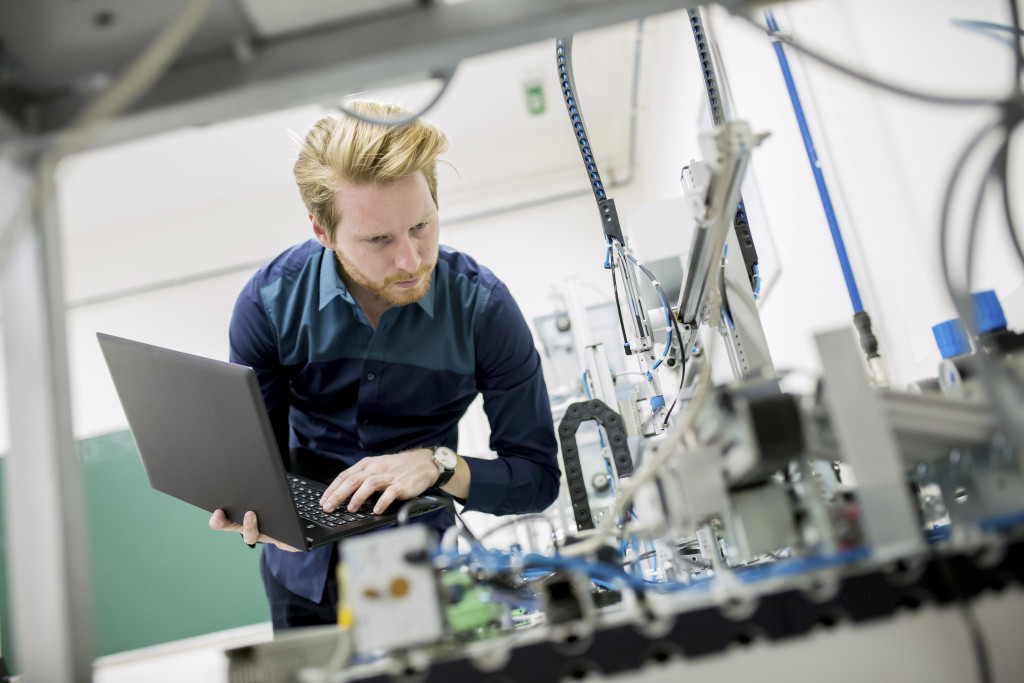Industrial robots are increasingly becoming a staple in the manufacturing industry as more and more companies seek to automate their production processes. According to the International Federation of Robotics, about 3 million industrial robots are operating in factories across the globe today- and that number is only expected to grow in the coming years.
These machines can perform various tasks with speed and precision, such as welding, fabricating, and measuring. While industrial robots have been around for decades, they continue to evolve and become more advanced. So how do these robots work? Here’s a closer look at the inner workings of industrial robots:
Robot Controller
The heart of an industrial robot is its controller, which acts as the brain. The controller houses a computer that stores information and instructions that tell the robot what to do.
Operators input instructions into the controller using a language called Robotics Markup Language, or RoboML. The controller then sends signals to the robot’s motors, which are responsible for moving the robot’s joints. It allows the robot to carry out the task at hand.
Many controllers also come equipped with sensors that help the robot avoid obstacles and navigate its environment. This way, the robot can safely carry out its tasks without damaging other equipment or injuring any workers in the area.
Manipulator
Of course, an industrial robot wouldn’t be much use without a manipulator, the part of the machine that does the work. The manipulator consists of a series of joints and links that give the robot its range of motion.
Joints allow the manipulator to move in different ways- just like how human joints enable a person to move their arms and legs. There are different types of joints that allow for different kinds of movement. The most common type is the revolute joint, which allows for rotation around a single axis. Another common type is the prismatic joint, which allows for linear movement along a single axis. More complex joints also allow for a combination of linear and rotational motion. These are called spherical or spherical-like joints.
The number of joints in a manipulator varies depending on the specific task it is designed to carry out. So, it’s best to consult a robotics expert to determine the best manipulator for your needs.
Grippers or End Effectors
Grippers also play a crucial role in an industrial robot’s task performance. Also known as end effectors, grippers are attached to the manipulator and are responsible for interacting with the workpiece.
There are a variety of grippers that can be used, depending on the specific task at hand. For example, suction cups can be used for tasks that require delicate handling, such as picking up a glass bottle. On the other hand, clamps are better suited for jobs requiring more forceful gripping, such as welding two pieces of metal together.
Whichever gripper you choose, it is vital to ensure that it is compatible with the rest of the robot. Otherwise, you risk damaging the gripper or the workpiece- or both.
Drives
Powering all these moving parts are drives, providing the energy needed for the robot to carry out its tasks.
There are three main types of drives used in industrial robots. Pneumatic drives use compressed air to power the robot. They are typically used for tasks requiring high force levels, such as welding and fabricating. Hydraulic drives use pressurized fluid to control the robot. They are present in larger robots that need to move heavy loads. Electric drives are the most common type of drive used in industrial robots. They use electric motors to power the robot and are suitable for various tasks.
Drives are an essential part of an industrial robot, so choosing the right drive for a specific machine is crucial. Otherwise, you risk damaging the robot, the workpiece, or both.

Mechanical Equipment
Every industrial robot needs some form of mechanical equipment to function. That includes belts, pulleys, and gearboxes, which help to transmit power from the drives to the robot’s moving parts.
These parts control the motors’ speed and distribute the power evenly. It helps to ensure that the robot moves smoothly and doesn’t overheat or break down. Especially for gearboxes, choosing one compatible with the rest of the robot is crucial. Otherwise, you risk damaging the gearbox or the entire machine. This part is where a planetary gearbox comes in handy.
A quality planetary gearbox is ideal for applications with limited space. It is also efficient in terms of power consumption and has a long lifespan. You can find a variety of planetary gearboxes on the market, so it’s essential to consult a robotics expert to find the best one for your needs.
For a robot to function properly, these components must work together seamlessly. This way, you can be sure that your robot can carry out its tasks correctly.
Investing in an industrial robot can help improve your manufacturing process’s efficiency. But it is essential to understand how these machines work before purchasing. With this knowledge, you can be sure to choose the best tools for your specific industrial robot needs.

